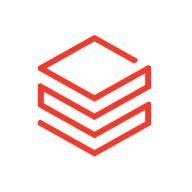

Alteryx and Databricks are leading platforms in the data analytics and big data processing space. Alteryx is known for its user-friendly, code-free analytics capabilities, while Databricks leverages its Spark-based architecture for efficient big data handling and scalability.
Features: Alteryx simplifies data blending and predictive analytics with a drag-and-drop interface, supports Tableau integration, and offers spatial analysis tools. On the other hand, Databricks provides a collaborative notebook interface, supports multiple programming languages, and is built for big data processing with its Spark architecture.
Room for Improvement: Alteryx could enhance its visualization capabilities, documentation, and cloud integration while reducing licensing costs. Databricks might improve its predictive analytics libraries, enhance visualization integration, and expand self-service options for broader user appeal.
Ease of Deployment and Customer Service: Alteryx predominantly operates on-premises with limited cloud flexibility, but it has a strong community and responsive support, albeit costly at high tiers. Databricks excels with public and hybrid cloud deployments, offers scalability, and is well-regarded for its cloud-native flexibility and customer service.
Pricing and ROI: Alteryx is expensive with a high cost for server licenses, providing ROI in data tasks for medium to large businesses, although it's pricey for smaller organizations. Databricks uses a flexible pay-as-you-go model but can be expensive for extensive data processing; its cost-effectiveness depends on efficient cloud resource management, offering substantial ROI for large-scale operations.
Alteryx helps familiarize managers with artificial intelligence-driven possibilities.
For a lot of different tasks, including machine learning, it is a nice solution.
When it comes to big data processing, I prefer Databricks over other solutions.
I contacted customer support once or twice, and they were quick to respond.
The customer service was not good because we weren't premium support users.
Customer support is good since I've had no issues and can easily contact representatives who respond promptly.
Whenever we reach out, they respond promptly.
As of now, we are raising issues and they are providing solutions without any problems.
Alteryx is scalable, and I would give it eight out of ten.
The patches have sometimes caused issues leading to our jobs being paused for about six hours.
Databricks is an easily scalable platform.
I didn't need to reach out to Alteryx for support because available documents usually provide enough information to resolve issues.
I have not encountered any lagging, crashing, or instability in the system during these three months of usage.
They release patches that sometimes break our code.
Although it is too early to definitively state the platform's stability, we have not encountered any issues so far.
Cluster failure is one of the biggest weaknesses I notice in our Databricks.
The tool could include more native connectors, such as for global ERPs, instead of requiring additional fees for these connections.
The support structure changed; initially, we received great support, however, it later became less reliable due to licensing issues and a tiered support system.
It would be beneficial if Alteryx could lower its price or introduce a loyalty program for individual consultants and freelancers like me.
Adjusting features like worker nodes and node utilization during cluster creation could mitigate these failures.
We prefer using a small to mid-sized cluster for many jobs to keep costs low, but this sometimes doesn't support our operations properly.
We use MLflow for managing MLOps, however, further improvement would be beneficial, especially for large language models and related tools.
Alteryx is more cost-effective compared to Informatica licenses, offering savings.
It has a fair price when considering a larger-scale implementation.
Alteryx is expensive.
It is not a cheap solution.
Alteryx not only represents data but also supports decision-making by suggesting the next steps.
Alteryx is user-friendly and allows easy creation of workflows compared to Informatica PowerCenter.
The tool's flexibility in saving processes and using a vast amount of available memory has been extremely helpful.
Databricks' capability to process data in parallel enhances data processing speed.
The platform allows us to leverage cloud advantages effectively, enhancing our AI and ML projects.
The notebooks and the ability to share them with collaborators are valuable, as multiple developers can use a single cluster.


Alteryx can be used to speed up or automate your business processes and enables geospatial and predictive solutions. Its platform helps organizations answer business questions quickly and efficiently, and can be used as a major building block in a digital transformation or automation initiative. With Alteryx, you can build processes in a more efficient, repeatable, and less error-prone way. Unlike other tools, Alteryx is easy to use without an IT background. The platform is very robust and can be used in virtually any industry or functional area.
With Alteryx You Can:
Alteryx Features Include:
Some of the most valuable Alteryx features include:
Scalability, stability, flexibility, fast performance, no-code analytics, data processing, business logic wrapping, scheduling, ease of use, data blending from different platforms, geo-referencing, good customization capabilities, drag and drop functionality, intuitive user interface, connectors, machine learning, macros, simple GUI, integration with Python, good data transformation, good documentation, multiple database merging, and easy deployment.
Alteryx Can Be Used For:
Alteryx Benefits
Some of the benefits of using Alteryx include
:
Reviews from Real Users
"Automation is the most valuable aspect for us. The ability to wrap business logic around the data is very helpful." - Theresa M., Senior Capacity Planner at a financial services firm
"Alteryx has made us more agile and increased the speed and effectiveness of decision making." - Richard F., Director, Digital Experience & Media at Qdoba Restaurant Corporation
"The scheduling feature for the automation is excellent." - Data Analytics Engineer at a tech services company
"The product is very stable and super fast, five-star. It's significantly more stable than its nearest competitor." - Director at a non-tech company
“A complete solution with very good user experience and a nice user interface.” - Solutions Consultant at a tech services company
"There are a lot of good customization capabilities." - Advance Analytics PO at a pharma/biotech company
Databricks is utilized for advanced analytics, big data processing, machine learning models, ETL operations, data engineering, streaming analytics, and integrating multiple data sources.
Organizations leverage Databricks for predictive analysis, data pipelines, data science, and unifying data architectures. It is also used for consulting projects, financial reporting, and creating APIs. Industries like insurance, retail, manufacturing, and pharmaceuticals use Databricks for data management and analytics due to its user-friendly interface, built-in machine learning libraries, support for multiple programming languages, scalability, and fast processing.
What are the key features of Databricks?
What are the benefits or ROI to look for in Databricks reviews?
Databricks is implemented in insurance for risk analysis and claims processing; in retail for customer analytics and inventory management; in manufacturing for predictive maintenance and supply chain optimization; and in pharmaceuticals for drug discovery and patient data analysis. Users value its scalability, machine learning support, collaboration tools, and Delta Lake performance but seek improvements in visualization, pricing, and integration with BI tools.
We monitor all Data Science Platforms reviews to prevent fraudulent reviews and keep review quality high. We do not post reviews by company employees or direct competitors. We validate each review for authenticity via cross-reference with LinkedIn, and personal follow-up with the reviewer when necessary.